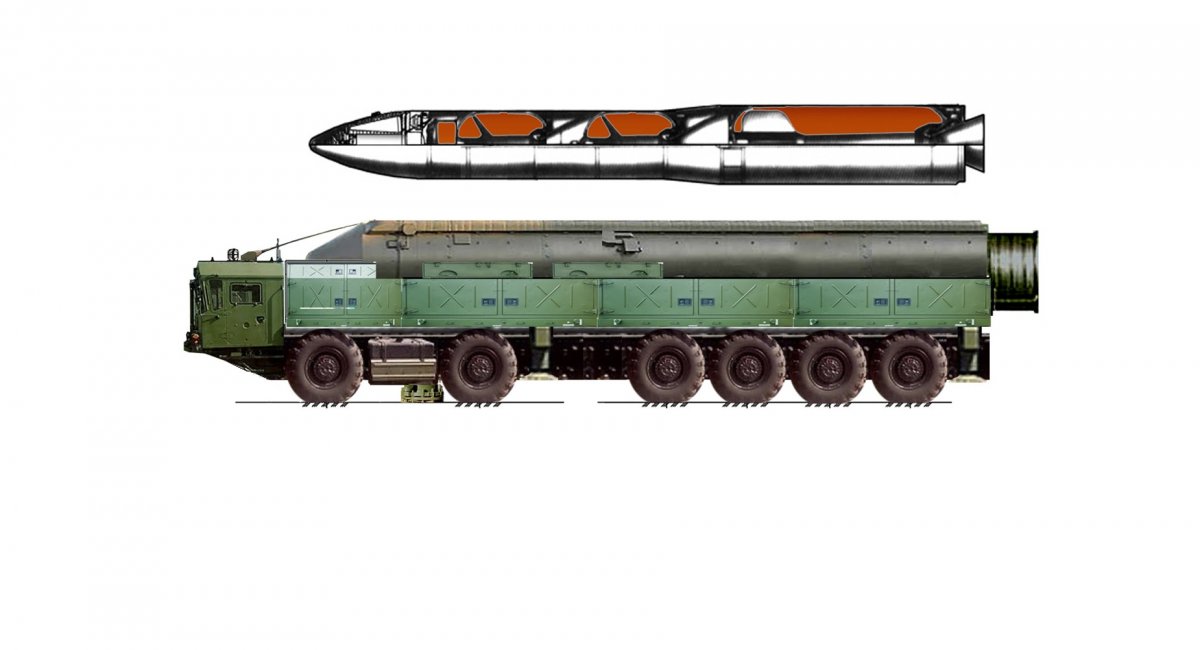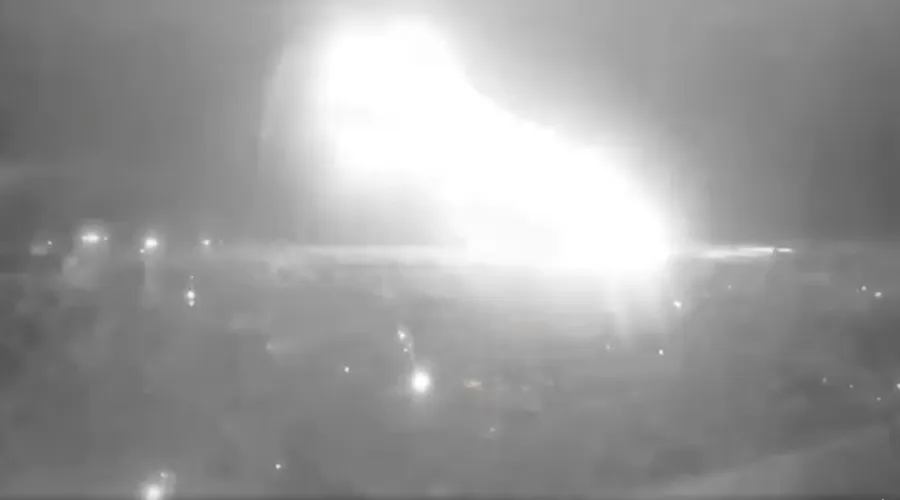“On November 21, 2024, the Russian Federation launched a missile attack on the city of Dnipro. This would be ordinary news, if not for one “but”: Russia became the first country in history to use an intercontinental ballistic missile (ICBM). The target of the attack, apparently, was the Yuzhmash plant in Dnipro, a key facility of the Ukrainian rocket and space industry. This event was unprecedented: for the first time a rocket”, — write on: ua.news
On November 21, 2024, the Russian Federation launched a missile attack on the city of Dnipro. This would be ordinary news, if not for one “but”: Russia became the first country in history to use an intercontinental ballistic missile (ICBM). The target of the attack, apparently, was the Yuzhmash plant in Dnipro, a key facility of the Ukrainian rocket and space industry.
This event became unprecedented: for the first time, a missile that is part of the strategic nuclear forces was used in a conventional (non-nuclear) form to hit a real target. And in general, such weapons are not intended for use in a classic conventional war. It is obvious that the main goal of the attack was not a military one, but a political, geopolitical and psychological effect.
Some experts believe that the Russians fired with an experimental RS-26 “Rubezh” missile. Maybe it’s true, maybe not – at the moment, examinations are still being conducted. However, the most important thing is not even what they were beaten with (although that is also interesting), but why it was done and what the enemy wanted to convey to Ukraine and the whole world. The UA.News agency looked into the issue.
What is known about RS-26 “Rubezh”
The missile, which, according to preliminary estimates, could be used by Russia, belongs to the RS-26 “Rubezh” type. This is an intercontinental ballistic missile, the development of which has been officially underway since 2006.
It is also interesting that since about 2018 there is no open information about “Rubezh” at all. The completion of development and testing was not officially announced. There is also no information that the RS-26 was adopted by the enemy army. But it is worth understanding that such weapons are always classified as “secret”, because they concern strategic nuclear forces. Therefore, it is not surprising that it is extremely difficult to find any reliable information without having access to classified military information at the level of a state secret of the Russian Federation.

Nevertheless, some Ukrainian experts are skeptical even of the very fact of the existence of “Rubezh”. Thus, missile weapons expert Oleksandr Kochetkov generally believes that the RS-26 does not exist.
“The fact is that such a rocket does not exist! There is no such rocket. It exists on paper as a project… Just the data, tactical and technical characteristics for it – they are there. But it does not exist in nature, you understand?”, says Kochetkov.
The existence or non-existence of such a missile is still a question hidden by the “fog of war”. But the expert is definitely right about one thing: the tactical and technical characteristics of “Rubezh” are known. Here they are:
- Flight range: from 2,000 to 5,800 km (officially an intercontinental weapon, but capable of operating at medium range as well).
- Weight of the warhead: can carry both a single nuclear charge with a capacity of up to 300 kilotons, and several independently targeting units and stages.
- Speed: more than 7 km/s on the final stage of the flight.
- Mobility: is based on mobile platforms, making detection difficult.
- Anti-aircraft defense means: the use of maneuvering warheads, which make it difficult to intercept even modern anti-missile systems.

RS-26 is called by some analysts a “weapon for bypassing anti-missile defense”, because its characteristics allow it to break through defense systems similar to even the American THAAD or the Israeli Hetz-3. Actually, Ukraine currently has no air defense equipment capable of intercepting such a missile. There are none in many NATO countries. And this, in fact, is a very important signal from the occupiers.
Signals sent by Russia
Russia, using ICBMs in the war against Ukraine, sends several clear geopolitical and military signals. They need to be analyzed and critically understood.
Consequences for Ukraine and the world
The possible use by the aggressor of the RS-26 (or another ICBM – this is not so important) gives an understanding that the air defense systems available in Ukraine do not provide protection against strategic weapons. Western aid in this context remains critically important, but new tools are needed that can neutralize even such advanced missiles as “Rubezh” or its analogues.
The attack on the Yuzhmash plant undermines Ukraine’s missile and space potential, which is important for both defense and the economy. It is even symbolic of a kind, because such enterprises are strategic for Ukraine. It is a symbol of our industrial potential and ability to produce our own rockets.
If such an ICBM is equipped with a nuclear charge, the consequences will be absolutely catastrophic. For example, a charge of 300 kilotons can completely destroy a city like Dnipro, turning it into a radioactive wasteland and killing hundreds of thousands of people. It sounds so terrible that you don’t even want to think about such scenarios – but you have to, given the current realities.
“Rubezh” can carry a charge… 50 times larger than the bomb in Hiroshima,” warns military expert Valery Romanenko.
The use of ICBMs in conventional conflicts sets a precedent that changes the rules of warfare. Similar actions of Russia force NATO to react more harshly. This could include deploying additional missile defense systems in Europe or increasing the presence of American nuclear forces in the region.

It also seems that in this way Moscow is responding to both Ukraine and the West for the latter’s permission to hit the territory of the Russian Federation with its cruise missiles. By the way, in this context, yesterday’s behavior of the Western embassies, which were obviously wary of strikes with strategic weapons, also becomes understandable.
Conclusions and action algorithm
The strike by an intercontinental ballistic missile on the Dnipro is not only an escalation in Russia’s war against Ukraine, but also another blatant challenge to the entire international security system. This situation shows how easily Russia is ready to break any taboos related even to strategic weapons.
Ukraine and its Western partners should seriously rethink their defense capabilities, in particular, invest in new generation anti-missile defense systems. It is also necessary to ensure a clear response at the international level to prevent the recurrence of similar scenarios. Finally, the world community should unite in order to find and implement at least some ways to end the war peacefully – before the latter turns into a global nuclear conflict in which there will be no winners.
Finally, this strike is another reminder that Russia’s war against Ukraine knows no bounds in brutality and absurdity. Apparently, this is the first and only country in the world that uses strategic nuclear missiles as a “bump” to strike a plant in a neighboring country. And it crosses all the lines of abnormality so much that sometimes there are simply no words.
Nikita Trachuk
